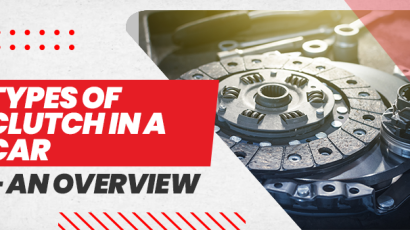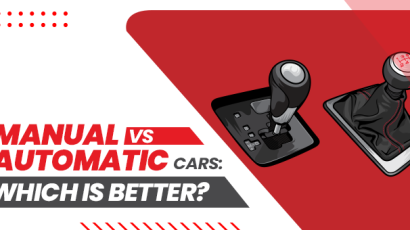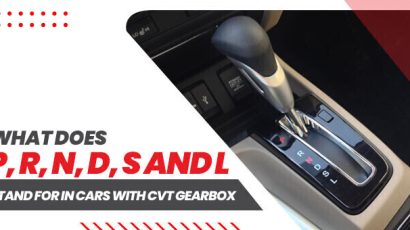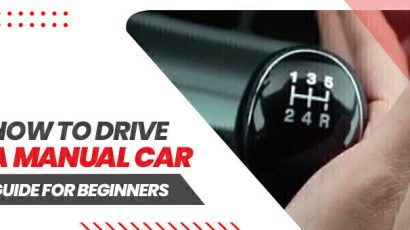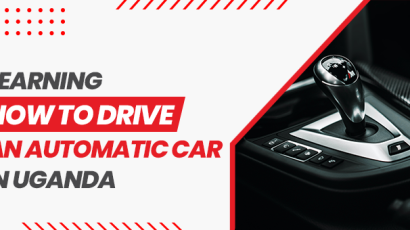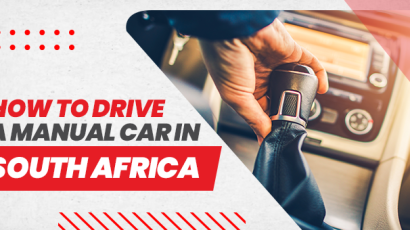
There was a time when the majority of cars were sold with manual gearboxes. However, that has now changed significantly. Now automatic transmissions have vastly improved, and most new models have dropped the manual gearboxes altogether. You might only find them in cheaper car models.
The progression in technology has also given rise to different transmissions. Their use has increased in popularity, and the different acronyms can be very confusing. In this article, we discuss the most common types of gearboxes and how they work.
Two Main Types of Gearboxes
The gearbox is a vital component of the vehicle. It transmits power from the engine to the drive train, allowing the car to be driven. Essentially, it acts as a key link between the driver and the vehicle. The two main types of gearboxes are as follows:
Manual Transmission
A manual transmission is the classic stick shift that people have been driving for decades. It refers to a gear stick for choosing the gear you want the car in. Pressing your left foot on the clutch pedal, you can disengage the gearbox and change the gear using the lever. The clutch is then re-engaged to reconnect the wheels and engine of the car.
A manual gearbox gives the driver full control of the vehicle. The driver can drop the gear to speed away swiftly or save fuel by staying in a higher gear. However, operating a manual transmission requires skill as you continuously engage and disengage the clutch and shift gears while keeping the car in motion.
Most cars have five or six gears to drive the car in. However, some newer car models are now sporting seven-speed manual gearboxes, such as the Aston Martin Vantage and the Porsche 911.
Automatic Transmission
As opposed to a manual gearbox, an automatic gearbox is entirely different in how it operates. There are different transmissions for different applications, and some may not work well with other mechanical characteristics of the car.
An automatic gearbox usually has options like Park, Reverse, Neutral, and Drive, while some may have additional functions such as a manual shift mode or Sport. An automatic gearbox has an electronic switch that acts as the “gear level” by sending instructions to the software managing the gearbox. Many advancements have been made in this aspect, and now you can see the use of paddles, dials, or buttons to control the transmission.
Types of Automatic Transmission
There are various types of automatic transmission cars you can find on SBT Japan. The types are explained below:
Torque Converter
This category of transmission has been around since the 1950s and is still common today. It is a classic that uses fluid to uncouple the engine from the gearbox instead of a clutch. It is contained in a sealed container known as an impeller. From here, the power is transmitted from the engine to the fluid and then onwards to the output shaft.
Today most modern cars have between six and ten speeds which has been a steady increase in the number of gears over the years. Torque Converter offers many advantages, including high torque at low engine revs and smooth acceleration at low speeds.
Single-clutch Transmission
This type of transmission was introduced by Ferrari and used in F1. It is built like a manual transmission and is often referred to as a semi-automatic or automated manual. It uses a traditional clutch to change the gears, but the driver only has to push a gear lever.
The single-clutch transmission setup weighs far less than a traditional torque converter automatic and has a more direct feel. Single-clutch transmission has been popularly used in high-performance cars, and their newer models are more robust.
Dual-clutch Transmissions (DCT)
Dual-clutch transmissions are prevalent in the market by different names by different automakers. It is called a direct shift gearbox (DSG), S-Tronic, or PDK, which are all different names of the same thing. It is a common automatic transmission found in diesel and petrol cars.
This type of gearbox works with two clutches. One manages the even-numbered gears, while the other is for the remaining odd gears. This kind of gearbox allows pre-selecting the near gear before the shift, which makes the shifts occur quicker.
Constantly Variable Transmission (CVT)
CVT works without gears. It uses a cone shape with a band that moves up and down to vary the gear ratio. Theoretically, it optimizes fuel efficiency but still needs some work to offer a pleasant drive.
The CVT is a useful transmission for hybrids as it can balance the electric motor and the petrol engine. There are various downsides to CVT as well. For instance, it can feel like pulling against rubber at higher speeds. The driving experience can often feel unpleasant, and the accompanying noise can be horrible.
Single-speed Transmission
You can find these in electric cars. There is no gearbox at all because only one gear is used to transfer the power to the wheels. For higher speeds, the electric motor spins faster, and vice versa. This kind of transmission feels seamless and smoother but maximizes efficiency as there is no direct connection between the engine and the wheels.
Functions of Gearbox
Now we are well aware that the main function of a gearbox is transmitting power to the wheels from the engine to power the vehicle. There are a number of other uses as well, which include:
1. Adjusts the rotating shaft between stationary and moving by changing the twisting moment.
2. Offering a gear ratio to correspond with the vehicle engine load.
3. Producing and changing energy for a more accurate feeding process by other components.
4. Induce regular engine rotation to promote rotational movement.
5. Adjusts the power and torque to move the vehicle forward or backward.
Signs of Gearbox Damage
All components of the car will work perfectly if the gearbox is in good working order. However, if it damages, you will face many problems with the vehicle. Following are some signs of gearbox damage that you must look out for:
1. Realizing a burnt smell coming from transmission fluid
2. Witnessing a fluid leak from the transmission
3. Hearing noises upon starting the car
4. The engine light on the dash lights up
5. Experiencing friction when shifting the gear
How to Maintain the Types of Gearboxes
Routine maintenance of the types of gearboxes is important to avoid problems. Undoubtedly, it is one of the most critical components of the vehicle. Some things you can do to enable smooth functioning to include the following:
Warm Up the Vehicle
You should develop the habit of warming up the vehicle before driving it. It will lead to better gearbox performance and make the system more awake.
Routine Maintenance
You should take your vehicle for routine car service to rule out possible problems. By conducting a routine check, it will be easier to detect any damage to the gearbox in time and fix it accordingly.
Regular Oil Change
To enable good gearbox performance, you should change the transmission oil regularly, as it will lubricate the associated components and minimize the workload on the gearbox.
Read this blog, if you want to learn more about car engine parts.






